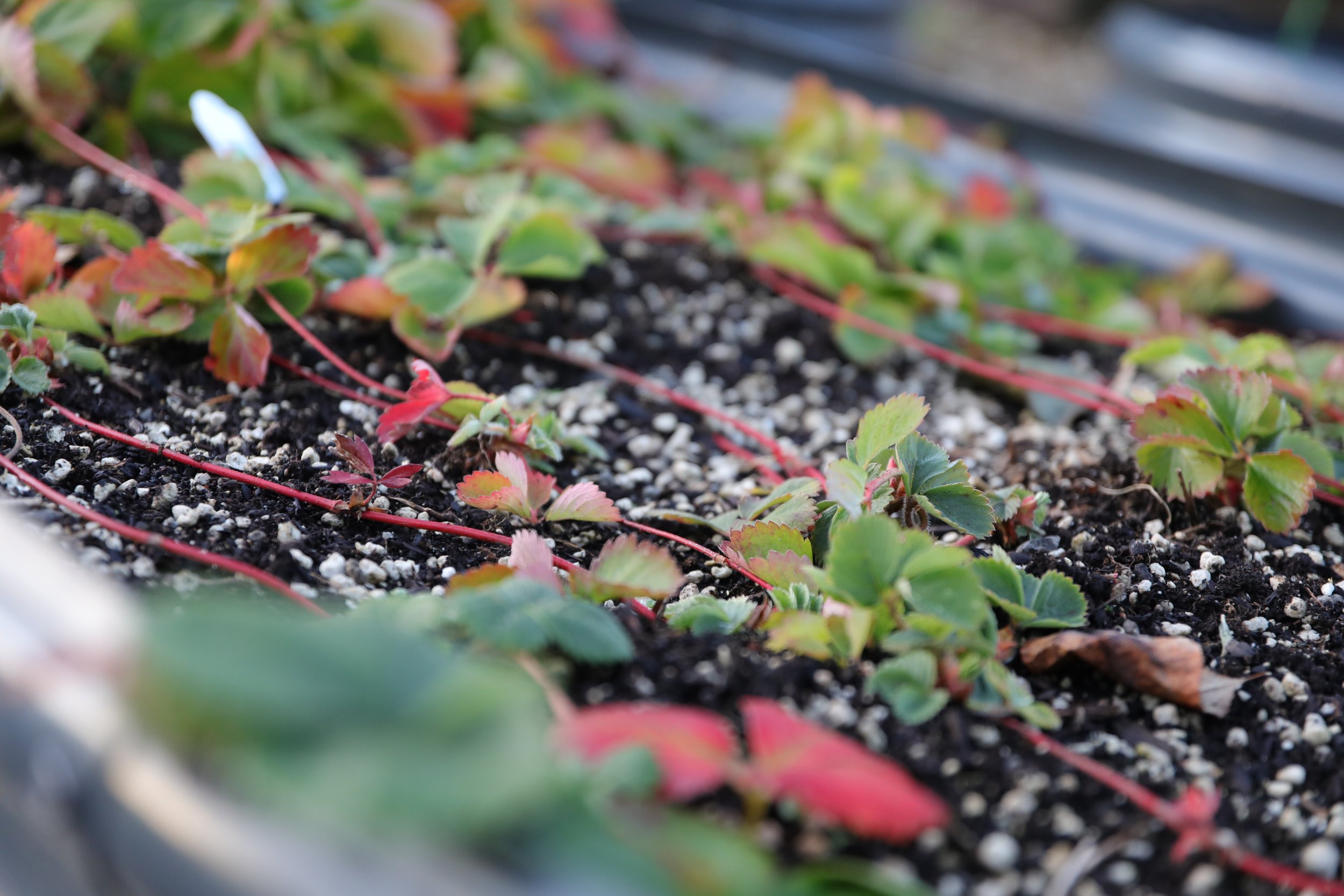Winter Strawberry Care Tips for the Best Spring and Summer Harvest
Winter is a critical season for preparing your everbearing strawberries to thrive in the coming months. With a little planning and care, you can protect your plants from the cold and set the stage for a bountiful harvest in spring and summer. Here's how to ensure your strawberries are ready to burst with flavor next year.
1. Clean Up Your Strawberry Beds
Start by tidying up your strawberry beds. Remove any weeds, debris, or dead leaves around the plants to prevent pests and diseases from overwintering. Be gentle when handling the plants, as their roots are sensitive and easily disturbed.
2. Trim and Tidy the Plants
Prune back any runners (the horizontal stems that spread out to form new plants) that you don’t need. Focus the plant’s energy on the crown and roots for a stronger start in spring. Avoid over-pruning; leave a healthy portion of leaves to help the plant store energy during dormancy.
Looking for tips on how to grow the perfect onions or winter care for raspberries? Be sure to check out my other blog posts!
3. Apply a Thick Layer of Mulch
One of the most crucial steps in winter care is mulching. Use straw, pine needles, or shredded leaves to cover the plants. This acts as insulation, protecting the roots and crowns from freezing temperatures. Aim for 3-4 inches of mulch but ensure the crown remains slightly exposed to prevent rot.
4. Keep Soil Moist (But Not Too Wet)
Before the ground freezes, water the plants deeply to hydrate the roots. During winter, monitor the moisture level; dry spells can harm dormant plants. However, avoid waterlogging, as soggy soil can lead to root rot.
5. Consider Row Covers for Extra Protection
If you live in an area with particularly harsh winters, use row covers or fabric frost blankets to shield your strawberries from extreme cold and wind. Secure the edges to keep the covers in place and remove them during warmer spells to prevent overheating.
6. Inspect for Pests and Diseases
Check your plants for signs of pests or diseases before mulching. Address any issues promptly to avoid carrying problems into the growing season. For organic gardeners, a mild spray of neem oil or an insecticidal soap can be helpful for pest management.
7. Plan for Fertilizing in Early Spring
Winter isn’t the time to fertilize strawberries, as it may encourage untimely growth. Instead, plan to feed your plants with a balanced fertilizer in early spring when new growth begins. This will give them the nutrients they need to produce sweet, juicy berries.
8. Evaluate Your Strawberry Patch
Take time to assess your strawberry patch. Are your plants overcrowded? If so, consider transplanting or thinning them in early spring. Healthy spacing improves air circulation and prevents disease, ensuring better fruit production.
Looking Ahead
Everbearing strawberries provide fruit throughout the growing season, making them a garden favorite. By following these winter care tips, you’ll set your plants up for success and enjoy sweet, plump strawberries from spring through summer.
Do you have any special tricks for winter strawberry care? Share them in the comments below!


